
This is a model of the Swedish vessel Vasa, which was brought back from the dead in 1961.
Once it was raised from the seabed it floated and was towed to the location set aside for its restoration.
I first saw the Vasa in 1965 during a visit to Stockholm during my time as a cadet in Dunera, which at that time was a school ship.
From memory when I saw her she was in a building similar to an aircraft hanger and being sprayed with a liquid to preserve the her timbers. The liquid, I believe was polyethylene glycol, and she was sprayed with PUG for seventeen years before being allowed to dry out, which is still in the process of doing today.
In 1965 the ship could only be viewed from two levels and we were not allowed to get too close. It made such an impression on me that I knew that I would return one day.
As soon as I heard of the Celebrity Silhouette’s Baltic cruise I checked to see if Stockholm was one of the ‘stops’. It was, so I booked.
The spraying of sunken wooden ships with PUG is now standard, and was used on the British vessel Mary Rose, which was in Henry the VIII’s navy, having been launched in 1511 and she sank in 1545 during a battle against the French.
The Vasa sailed from Stockholm on the 10th November in 1628. She had been ordered to sea to take part in the war, which was in progress between Sweden and Poland- Lithuania (1621-1629). She managed about 1300 meters (1400 yards) before the wind caused her to list, but she righted herself, but the wind blew again and this time she was pushed so far over that her gun-ports were pushed under water and she was unable to right herself, and went over and sank.
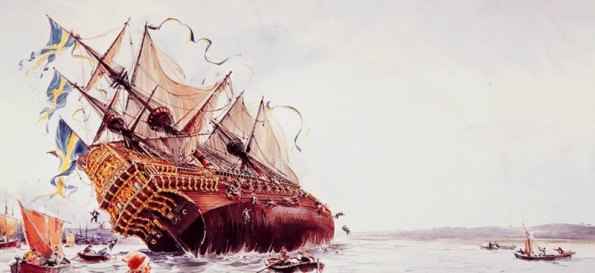
From a painting that I found on the internet.

A photograph I took of a plaque in the museum.
In 1961 during the investigation inside the vessel they found the remains of at least fifteen people.
The ship had survived complete destruction throughout her 333 years under water due to a number of factors.
The salinity of the water where she sank is very low so ship-worms can not survive, the waters around the wreck didn’t have any, or very limited amount, of oxygen in it, and the temperature of the water was very low between 1 to 5 c, (just above freezing). The ship was built of oak heartwood, which had a high iron content, plus the vessel was new when it sank.
When they found the Vasa they had to come up with a way of lifting her from the seabed without damaging the wreck itself. The system they used was very similar to the first attempt to float the Vasa, which was a few days after she sank. They used a system of ‘camels’, which has been used by most navies for hundreds of years, when sailors wished to reduce the draft of a vessel in shallow waters.
In the case of the Vasa it took two years for divers to create six tunnels under the wreck, because she was so deep in the mud. They could not risk attaching grab claws in case they damaged her. It took 1300 very dangerous dives to create the tunnels through which wire ropes were passed. The ends of the wire ropes were attached to two barges on the surface, which had been filled with water, so they were low in the water. The water in the barge was pumped out causing the barges to rise, and so hopefully raise the Vasa enough to break the grip of the mud that had half buried her during the last 300 odd years.
Each time she moved the surface crew would tighten the wire ropes fill the barges with water again so they sank a little, tighten the wire rope again, and pump out the water, causing the barges to rise, and drag the Vasa up further. During the months of August and September 1959 after eighteen ‘lifts’ she had been raised 16 meters (105 ft) from the seabed, but was still about 16 meters under the water. This allowed the wreck to be moved to a more sheltered area, which would allow divers to do further investigations.

I found this on the internet, which is a good illustration of a ‘camel’ in operation.
Parts of the Vasa had broken away and buried in the sea mud. These parts were rescued, cleaned and reattached correctly. The reconstructed vessel today is 98% of the original. Apparently they have found 40,000 artifacts in and around the ship, which has opened new knowledge of life at that time.

Not all that much different to the sea chest issued to me when I joined HMS Conway in 1960.

This was my first impression of the Vasa during my recent visit. The whole building is atmospherically controlled to protect the ship from decomposing, and they try to keep the temperature at a level that is acceptable to the public.
The ship is HUGE!

A clear view off the gun-ports

Obviously the rigging is new
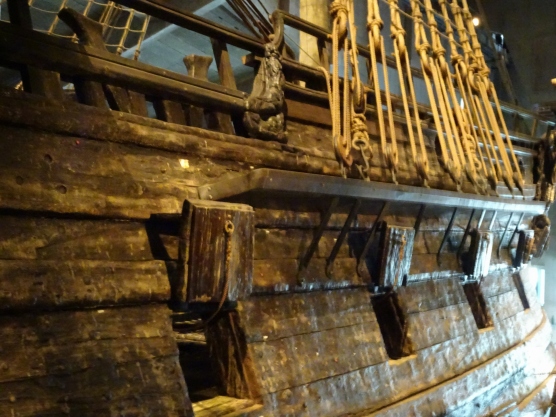
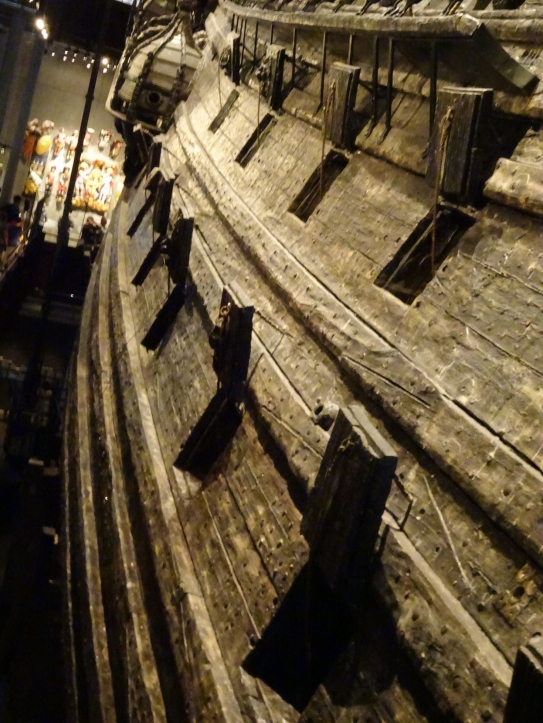

The main deck had to be replaced because it had been damaged over the years when many of the cannon had been removed.

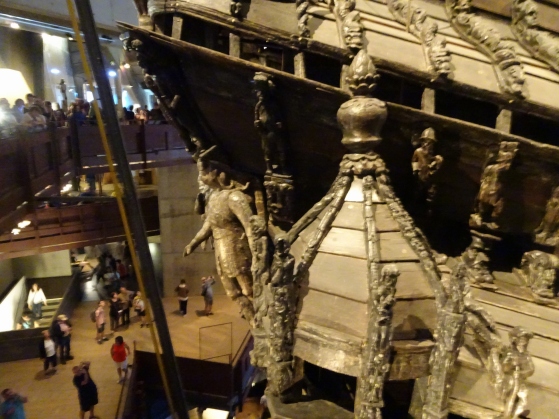
As one moves aft towards the captain’s & officer’s accommodation area we see the artistry of the carvings clearly. The stern area would have been bolted to the main ship with iron bolts and as time went on, the iron would have rusted away and the accommodation collapsed in to the mud. When this area was recovered they found that the mud had saved some of the figure’s colour, so that scientists could work out the correct colouring. The accommodation was reattached.
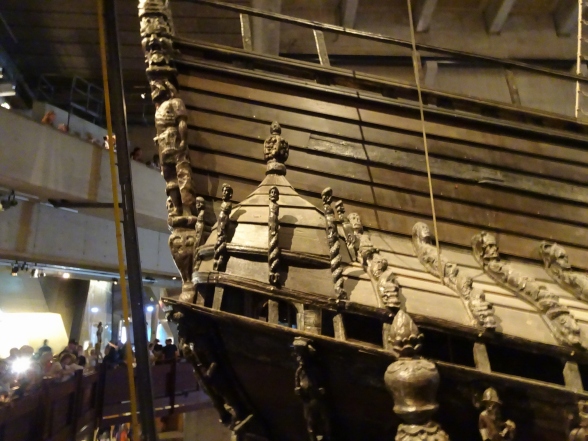
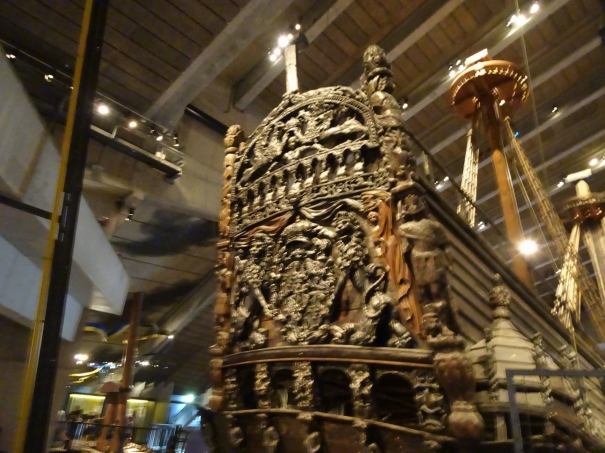
The stern with the detailed carvings still available to be seen.


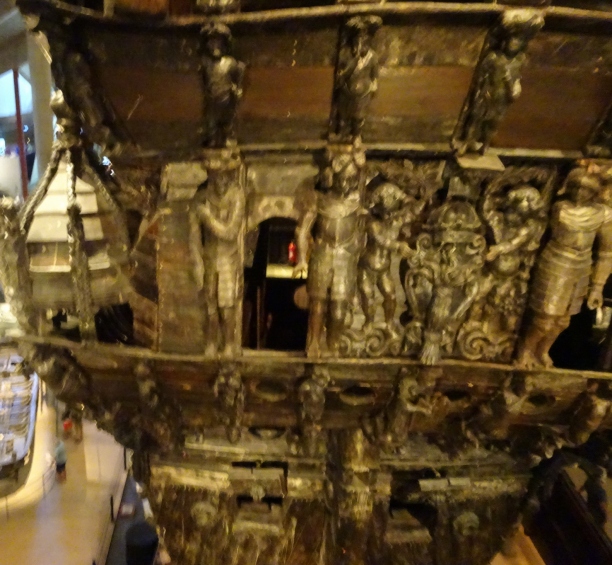
I stood on a platform at the stern to take this photograph (with many other ‘clickers’) which was about two floors up – note the size of the person on the bottom left of the picture which gives an idea of the ship’s size.
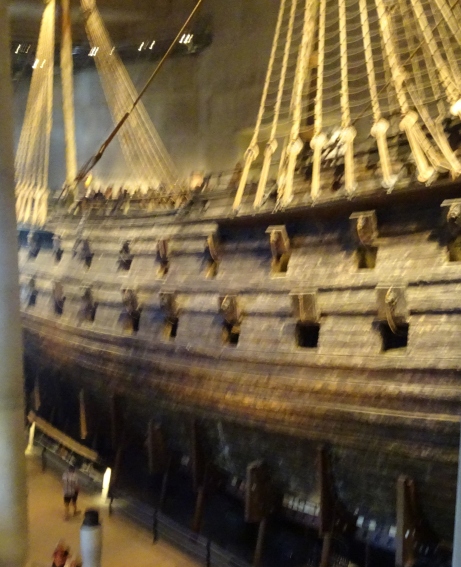
An easier picture to illustrate the vessels size compared to the people underneath.

Three cannon bronze were rescued, most of the others had been removed from the Vasa in the 17th century.
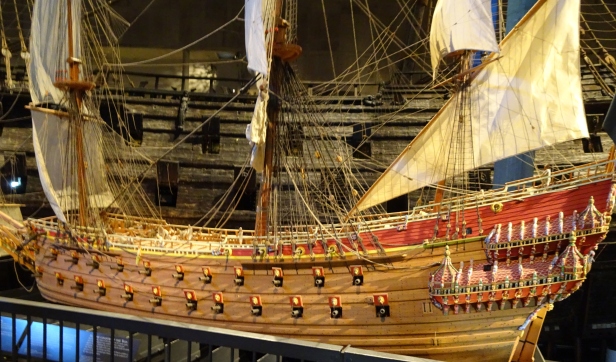
A model of what she would have looked like on the day she sailed.
 The colourful stern.
The colourful stern.
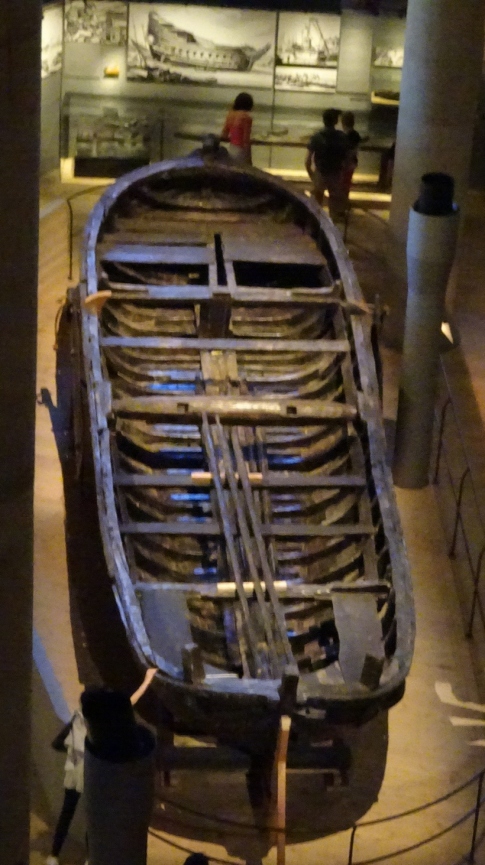
A longboat found lying next to the Vasa and believed to have been one of the boats towed by the her as she sailed out of port.

Port side of the Vasa with the longboat, along with some tourists so as to compare size.
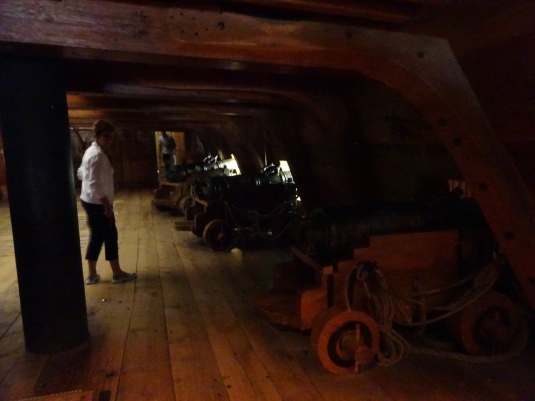
The museum has recreated the a gun deck (not on the ship but alongside the Vasa. As you see an average person can stand with ease. The guns are all replicas.

The museum has also created a scale model of life below decks.

One can see the stone ballast at the bottom, which was not enough to keep her upright.
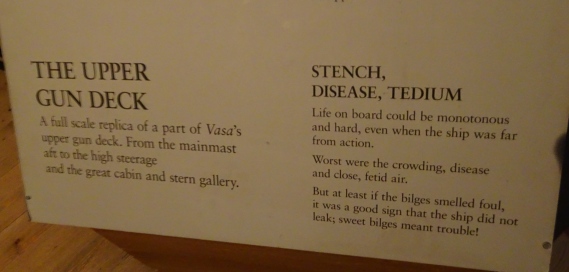
To see how they started to clean her click on VASA after the first minute the cleaning can be seen.
Tried to buy a booklet of the history of salvaging Vasa, they had a book stand with the booklet in about fifteen different languages, but unfortunately not in English, they’d sold out.
I blame all those cruise ship visitors! :- o)
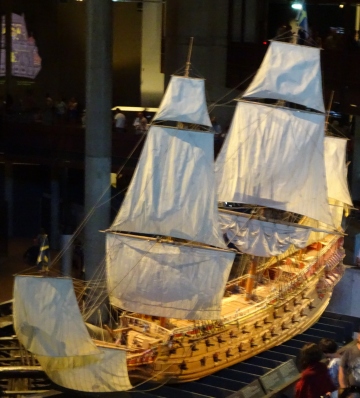

Great post. I was surprisingly enthralled at the Vasa Museum, I spent much more time there than I expected. I’m always telling people visiting Stockholm that they MUST visit the Vasa.
LikeLiked by 1 person
Thank you – I also tell people that the Vasa is a must-see during a visit to Stockholm. This visit was much better than my first visit in 1965, which didn’t surprise me considering that the Vasa had only ‘arrived’ four years earlier than my arrival. :-o)
LikeLike
Wow, very interesting, amazing to have the ship all in one piece and in such great condition. I love this kind of stuff.
LikeLiked by 1 person
thank you :-o)
LikeLike
I visited this museum in 2008 and yes, all very interesting and similar to the Mary Rose in lots of aspects. The only thing which I found strange was there was never a mention of what a mistaken design this ship was ! It should never have gone to sea, it was top heavy ! A Swedish nautical disaster !
LikeLiked by 1 person
Ah, the problem was compounded by the carpenters using two different types of rulers . From memory the Swedish carpenters had a different size for an inch, than the Dutch (I think they were Dutch) carpenters who were also used. Their measuring rods were not compatible, and this has been shown when measurements today have been taken in various areas of the ship.
Also the King kept changing / adding guns 24 pounders and at that time they didn’t have the knowledge of center of gravity, which is why the ship listed & sank.
Regardless it was an interesting day out :- o)
LikeLike